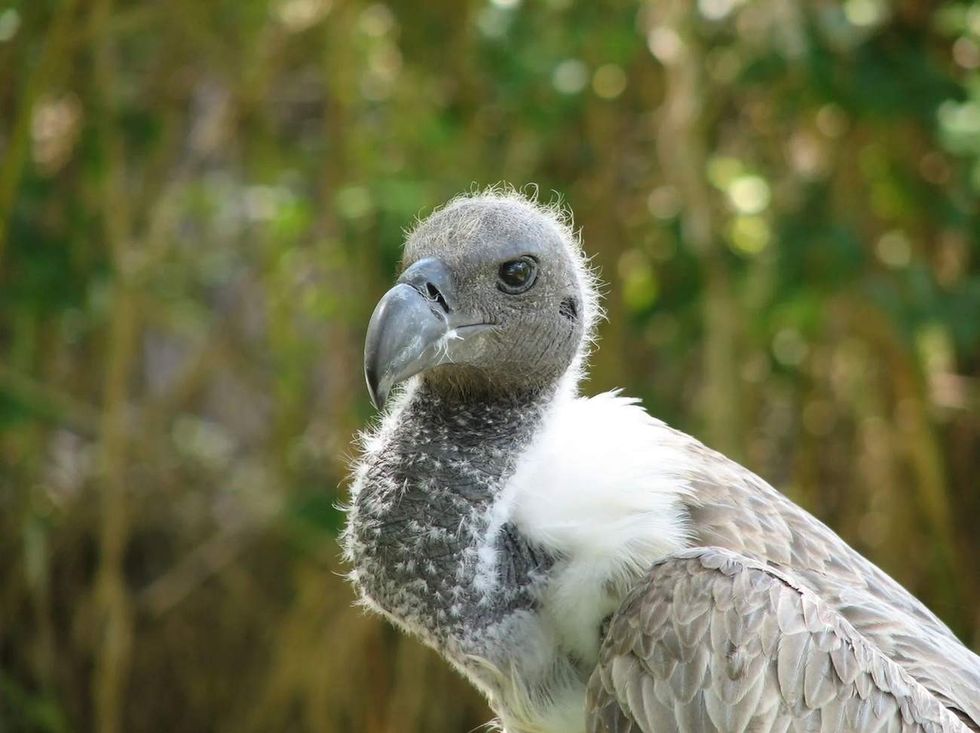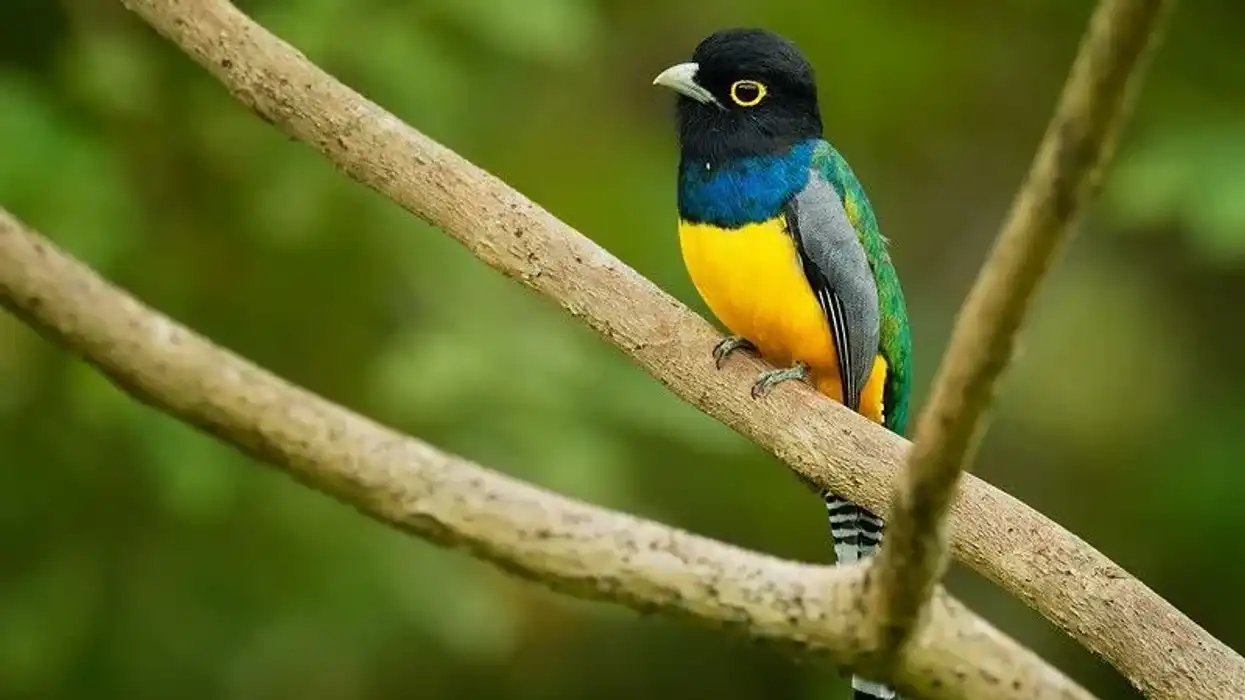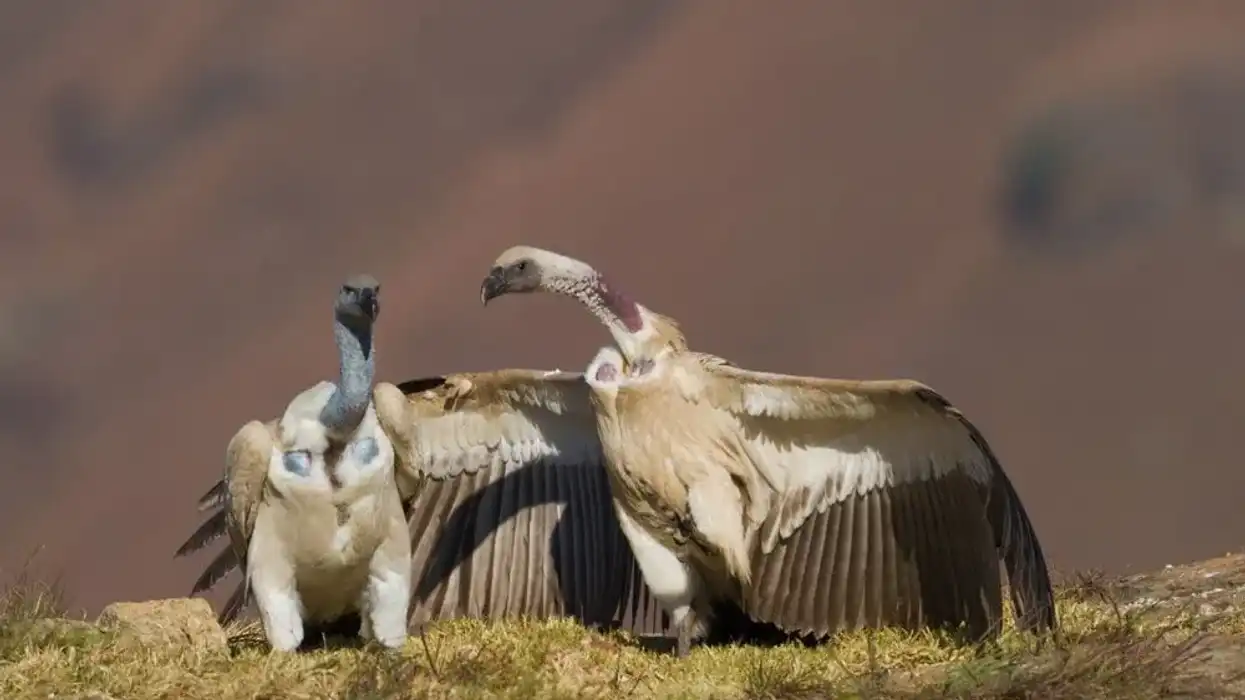The African white-backed vulture (Gyps africanus) is an Old World vulture within the Accipitridae family. The African white-backed vulture is closely related to eagles, hawks, and European griffon vultures.
It is typically known as the African white-backed vulture to separate it from the Asian white-backed vulture, but these two vultures are closely related. The white-backed vulture is considered the most widespread vulture within sub-Saharan Africa. These vultures may be quite intimidating at first glance, but they are beneficial to our ecosystem.
If you're hungry for more bird facts, be sure to check out the crested duck and the ring-necked duck here on Kidadl.
White-backed Vulture Interesting Facts
What type of animal is a white-backed vulture?
A white-backed vulture (Gyps africanus) is a bird.
What class of animal does a white-backed vulture belong to?
A white-backed vulture (Gyps africanus) is a bird so it belongs to the Aves class.
How many white-backed vultures are there in the world?
There is estimated to be a population of around 10,000 white-backed vultures in the world.
Where does a white-backed vulture live?
White-backed vultures live in forests in the continent of Africa.
What is a white-backed vulture's habitat?
The white-backed vulture is found in South Africa and tropical forests throughout West Africa. As well as in these equatorial forests in West Africa, white-backed vulture populations are also found in wooded savannas with tall trees.
Who do white-backed vultures live with?
A white-backed vulture often lives and hunts in groups. It is normal for a large population of vultures to eat together when they have found food.
How long does a white-backed vulture live?
A white-backed vulture has a life span of 15-20 years in the wild, but it can live for up to 30 years if captured.
How do they reproduce?
A white-backed vulture begins breeding during the start of the dry season and these vultures can be found breeding in savanna trees throughout Africa. Most species of vultures typically have only one mate per year.
A female white-backed vulture only lays one egg each breeding period in a nesting site made of leaves and sticks. This same nest is often used for multiple years!
Juveniles typically are a darker color and have light brown streaks throughout their feathers. A chick enjoys feeding from both its male and female parents for about 120-130 days, after which it will fly away from the nest in search of food. White-backed vulture juveniles will fully mature at around five to seven years old.
What is their conservation status?
The species of African white-backed vultures are considered Endangered by the IUCN.
White-backed Vulture Fun Facts
What do white-backed vultures look like?
An African white-backed vulture has a dark-brown face, a white neck, and a white backside that is only visible when the bird is in flight.
An African white-backed vulture's wings are white on the top and brown on the bottom, and they have a wingspan of up to 7.5 ft (2.29 m).
An African white-backed vulture's bald head aids in regulating their body temperature in the sub-Saharan African climate and it also keeps this bird clean while it's feeding on carcasses as feathers store germs more easily.
An African white-backed vulture also has down feathers around its neck.
How cute are they?
An African white-backed vulture is not considered cute they are rather scary wild birds!
How do they communicate?
Like most vultures, white-backed vultures use sounds to warn others of possible predators. White-backed vultures also use their eyesight to communicate with other vultures.
How big is a white-backed vulture?
White-backed vultures are 31-39 in (78-99 cm) long and have a wingspan of 6-7 ft (1.8-2 m). The African white-backed vulture's wingspan alone is taller than most humans!
How fast can a white-backed vulture fly?
The average white-backed vulture flight speed ranges from 50-55 mph (80-88 kph), this matches the average speed of many cars when driving!
How much does a white-backed vulture weigh?
African white-backed vulture (Gyps africanus) birds have an average body weight of 9.3–16 lb (4-7.2 kg).
What are the male and female names of the species?
Like most species of birds, a male white-backed vulture is called a 'cock', and a female white-backed vulture is called a 'hen'.
What would you call a baby white-backed vulture?
A baby African white-backed vulture is called a 'chick'.
What do they eat?
The African white-backed vulture flies through the sky hunting for newly dead carcasses, like wildebeests, zebras, and sometimes livestock. An African white-backed vulture's diet consists solely of carcasses of dead animals and, although this may sound gross, by eating fresh flesh, the vulture prevents the spread of harmful bacteria and viruses.
When a white-backed vulture, gyps Africanus, discovers a carcass, it will signal to other vultures by flying in the sky. African white-backed vulture beaks are unable to rip through strong skin, so they must eat the animals soon after they die when they still have soft tissues.
An African white-backed vulture will often eat so much of a carcass that it is unable to fly afterward. Talk about a big meal!
Are they dangerous?
Although their food consists of dead animals, white-backed vultures are not considered dangerous to humans.
Would they make a good pet?
No! African white-backed vulture wings alone are longer than the height of most humans. They are best suited to live among other wildlife in their natural habitat.
Did you know...
African white-backed vultures cannot detect dead animals from smell alone, they rely greatly on their eyesight. This breed of vultures is capable of smelling carcasses up to 4 miles (6.4 km) away.
Old World vultures are a part of the same family as eagles and hawks; these vultures can not smell their food and must hunt by sight.
Some people believe that vultures can predict winning lottery numbers and football scores!
A white-backed vulture's nest is typically 6-18 ft (2-18 m) above the ground.
When white-backed vultures notice a dead animal, they fly toward it, plant their feet in its flesh, and tear the flesh apart with their beaks. In less than 30 minutes, vultures can feed off the body of a small animal leaving it completely clean.
Vultures sunbathe after meals; this allows the heat from the sun to dry any bacteria from the dead animal, preventing it from spreading.
There are eight different species of vultures (including the African white-backed vulture) that have long necks that look bald. A white-backed vulture is not completely bald as it has down feathers on its head and neck.
The white-backed vulture is considered to be the most common vulture in Africa.
Excluding Australia and Antarctica, at least one species of vulture is found on every continent in the world. In total, there are 23 different types of vultures in the world and, due to human actions and climate change, more than half of these species of vultures are threatened, endangered, or critically endangered.
Vultures are normally a quiet species, but they are known to get rowdy when searching for a position while eating the carcasses of animals.
An African white-backed vulture's ears are not seen because they are covered by a thin layer of skin that prevents food from getting into their ears while eating.
Cardiovascular adaptations allow vultures to fly at higher levels, where oxygen levels are lower. Vultures also urinate on their feet to keep themselves cool, and this also helps prevents the spread of bacteria and diseases.
A group of vultures has different names depending on what they are doing. A group of vultures is typically known as a 'colt', 'committee', or 'venue'. When flying, vultures are called a 'kettle' and when feeding the group is called a 'wake'.
African white-backed vultures' only natural predators are humans. Vultures will typically vomit when they feel threatened. Vomiting helps to lessen their body weight so that they can escape in flight easier. Vomiting is also a defense mechanism to scare predators that may be threatening this bird.
Scientists are considering using vultures to find dead bodies! Understanding how a vulture finds a body and how fast they feed on the flesh can be useful for forensic scientists' data.
The first Sunday in September is National Vulture Awareness Day.
Why is the white-backed vulture endangered?
The biggest reason white-backed vultures are endangered is due to poison when feeding on an animal carcass. Owners of livestock often give their animals a drug that is a deadly poison to wild vultures when it is consumed through the carcass as part of their diet.
A white-backed vulture can also die from lead poisoning when it's feeding on the carcass of an animal killed by a hunter.
Unfortunately, poisoning is one of many threats leading to the declining population of this vulture species.
People also hunt the white-backed vulture. In some parts of southern Africa, people also kill the white-backed vulture for medicinal purposes and populations of white-back vultures are also victims of habitat loss, electrocution due to power lines, drowning, and being captured for live trading.
What advantage do vultures have over other scavengers in searching for food?
New World and Old World species of vultures have large wings and can move without flapping their wings, this allows for vultures to reserve energy when searching for their next meal. White-backed vultures also have sharp curved beaks that can easily tear at the carcasses of animals.
These vultures' stomachs also contain a strong acid that kills bacteria, allowing them to have a diet of food that might make other animals sick.
Here at Kidadl, we have carefully created lots of interesting family-friendly animal facts for everyone to discover! For more relatable content, check out these saker falcon facts and peregrine falcon facts for kids.
You can even occupy yourself at home by coloring in one of our free printable white-backed vulture coloring pages.










